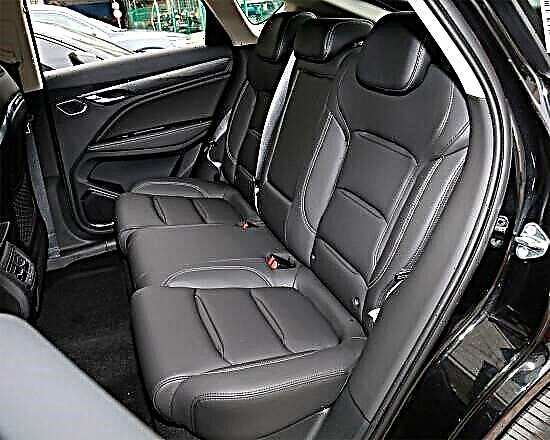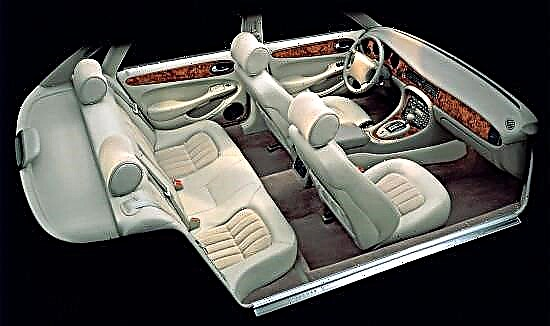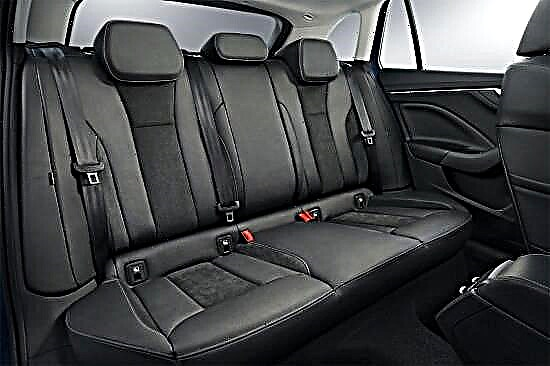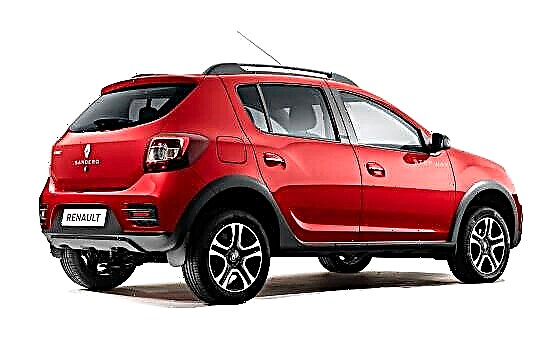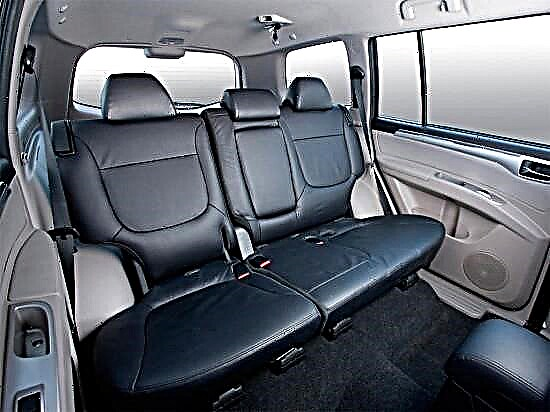Since July 2013, the assembly of this mid-size SUV has been carried out in Russia at the PSMA Rus plant in Kaluga, which the Japanese automaker owns jointly with the PSA Peugeot-Citroen group. An updated version of the second Pajero Sport (2014-2015 model year), intended for the Russian market, was presented at the beginning of September 2013 and, almost immediately, the official acceptance of orders for this car, already assembled in Russia, began.
Previously, Mitsubishi Pajero Sport came to our country from Thailand, but for the first time the second generation of an SUV was released in 2008. The current restyling of global changes in the appearance of "Sport" did not bring, but with its careful intervention brought its exterior closer to the "ideals" of Mitsubishi's flagship models.
More specifically, in 2013 he received: a new, more stylish, radiator grille; replaced the front bumper; reworked side mirrors, to which they added turn signal repeaters; offered a different design of rims and retouched taillights.

There were no changes in overall dimensions during this restyling, as before, the length of the Mitsubishi Pajero Sport is 4695 mm, the width of the body does not exceed 1815 mm, and the height is 1800 mm or 1840 mm, taking into account the roof rails. The wheelbase of the Russian-assembled crossover has not changed either, its length is exactly 2800 mm. The ground clearance of the second generation "Pajero Sport" is completely off-road and is ideal for Russian realities - 215 mm. The curb weight of the car, depending on the configuration, varies between 1950 - 2045 kg, but the maximum gross weight does not exceed 2600 kg for versions with a gasoline engine and 2710 kg for cars equipped with a diesel power plant.

There were practically no changes in the interior during this restyling. The Japanese have updated the multimedia system, but have replaced some finishing materials. The rest of the five-seater salon remained the same - comfortable, spacious and, most importantly, comfortable.



The luggage space was also left untouched. The bowels of the trunk of this car, in standard condition, are capable of accommodating up to 714 liters of cargo, and with the rear seats assembled, the capacity will increase to 1813 liters.
Specifications. The line of engines for the Russian version of Pajero Sport has not changed - the initial configurations are still equipped with a diesel engine, and more expensive versions are equipped with a 3.0-liter gasoline unit.
- As for the diesel installation, this is a 4-cylinder engine with a displacement of 2.5 liters, complying with Euro-4 standards and having a 16-valve DOHC timing belt. The maximum power of the diesel engine is declared at 178 hp, achieved at 4000 rpm. The engine torque at its peak is 350 Nm at 1800 - 3500 rpm for versions equipped with a 5-speed "automatic", and 400 Nm at 2000 - 2850 rpm for modifications with a 5-speed manual transmission.
- The gasoline unit has six V-shaped cylinders with a total displacement of 3.0 liters. The engine is equipped with ECI-Multi distributed injection, a 24-valve SOHC timing belt mechanism with an electronic valve timing control system and fully complies with the Euro-4 environmental standard. The peak power of the petrol power unit is 222 hp. at 6250 rpm, well, and the upper torque limit is 281 Nm at 4000 rpm. The petrol "six" is aggregated only with a 5-speed "automatic".

In terms of dynamic performance, with a gasoline engine, this SUV is capable of accelerating from 0 to 100 km / h in just 11.3 seconds. The diesel version with "mechanics" fits into 11.7 seconds, and diesel modifications with automatic transmissions the first hundred gains in only 12.4 seconds. The maximum travel speed is 179 km / h.
The fuel consumption of the gasoline Pajero Sport is at the "market average". Within the city, it will "eat" about 16.6 liters of AI-95 gasoline, on the highway it will cost 9.9 liters, and in mixed mode the consumption will be about 12.3 liters. Diesel versions with automatic transmission consume an average of 9.4 liters of fuel, and the "mechanical" versions are slightly more economical - their consumption in mixed mode will not rise above 8.2 liters.
The driving performance of the Mitsubishi Pajero Sport, after restyling and the transfer of production to Russia, remained at the same (high) level, which makes it more attractive against the background of competitors. The car in all trim levels, as before, will continue to be equipped with a Super Select 4WD all-wheel drive system with a low gear and a center and cross-axle differential lock function.
The frame structure, which is now being produced by the industrial group "GAZ", is equipped with independent suspension at the front and dependent at the rear, brakes on all wheels are ventilated discs, while the rear discs are also supplemented with integrated drum mechanisms for driving the parking brake. The steering gear is a rack and pinion, paired with a hydraulic booster.
Prices and equipment. The list of available trim levels and the level of equipment of the Mitsubishi Pajero Sport in each of them, after restyling, have not changed: Intense, Instyle and Ultimate.
In the basic equipment, the updated "Sport 2" gets ABS + EBD, front airbags, central locking, immobilizer, halogen optics, foglights, 16-inch alloy wheels, full-size spare wheel, adjustable steering column, fabric interior, heated front seats, full electrical accessories and air conditioning.
The cost of the diesel "Sport 2" in the "Intense" package in the spring of 2015 starts at 2,009,000 rubles, and for the "top diesel" ("Ultimate" equipment) with automatic transmission you will have to pay 2,329,990 rubles. The most affordable petrol version in the “Intense” version will cost 2,119,990 rubles, while the cost of the top-end Intense configuration will be 2,349,990 rubles.

